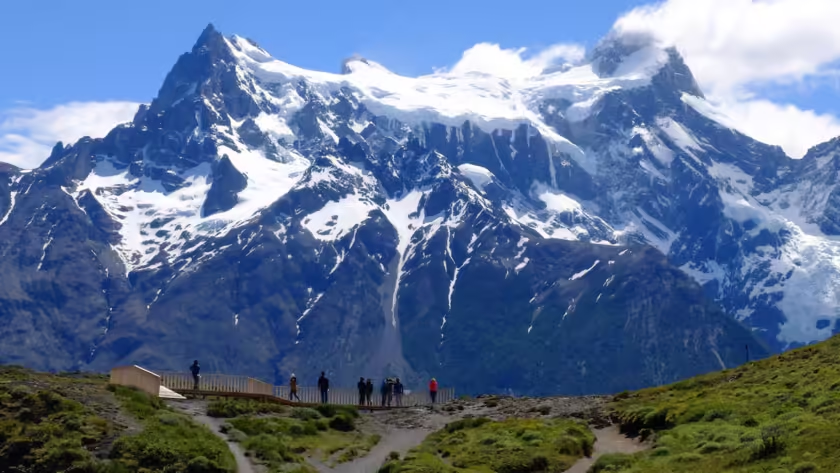
Introduction to Patagonia’s Unique Landscape
Patagonia refers to the area at the southern tip of South America, including parts of both Chile and Argentina, and is known due to its striking geographic features and varied natural beauty. This breathtaking landscape features dramatic contrasts from towering mountains to vast expanses of glaciers, from lush forests to sparkling lakes, making Patagonia one of the most beautiful places to visit in the world. The Andes mountain chain cuts through the region, giving it a majestic backdrop for varied outdoor activities and exploration.
Because the weather in Patagonia varies greatly across regions, it adds to the diverse biodiversity that thrives within its borders. The coasts have a marine climate with mild temperature and abundant rainfall, while the interior is much drier and has strong winds with raw landscapes. Depending on these various climatic factors, tourists often see an extraordinary range from dense, temperate rainforests to Chilean fjords and arid steppe of Argentina’s Patagonian Desert.
Patagonia attracts travelers and adventurers for its unmatched natural beauty, allowing one to hike, trek, and enjoy wildlife. Landmarks, such as Torres del Paine National Park with its astonish rock formations and the Perito Moreno Glacier, form the nucleus for visitors to delve into the region’s special environment. As a destination, Patagonia is so much in demand because of the great variation in experiences that it can offer-from the most rugged mountains to turquoise-colored lakes.
That being said, this beautiful landscape speaks not only to nature lovers but also provides a setting for new travel trends and infrastructure. By knowing what Patagonia geographically and climatically represents, the recent evolution and progress witnessed therein should be described, setting the scene to further dig into what the future can promise for such a unique destination.
Recent Developments in Patagonia’s Infrastructure for Tourism
Patagonia has been contemplated for its exceptional beauty in nature and the high concentration of biodiversity-a wave of improvements into the travel infrastructure with no compromise with the ecological spirit. The most recent projects have emphasized, in particular, the construction of eco-lodges that blend in wonderfully with the environment they stand amidst. Such facilities appreciate great importance placed on being sustainable by employing maximum local materials and energy-saving systems, which attract the ecologically sensitive traveler. They provide comfort, but an experience where people can connect with nature responsibly.
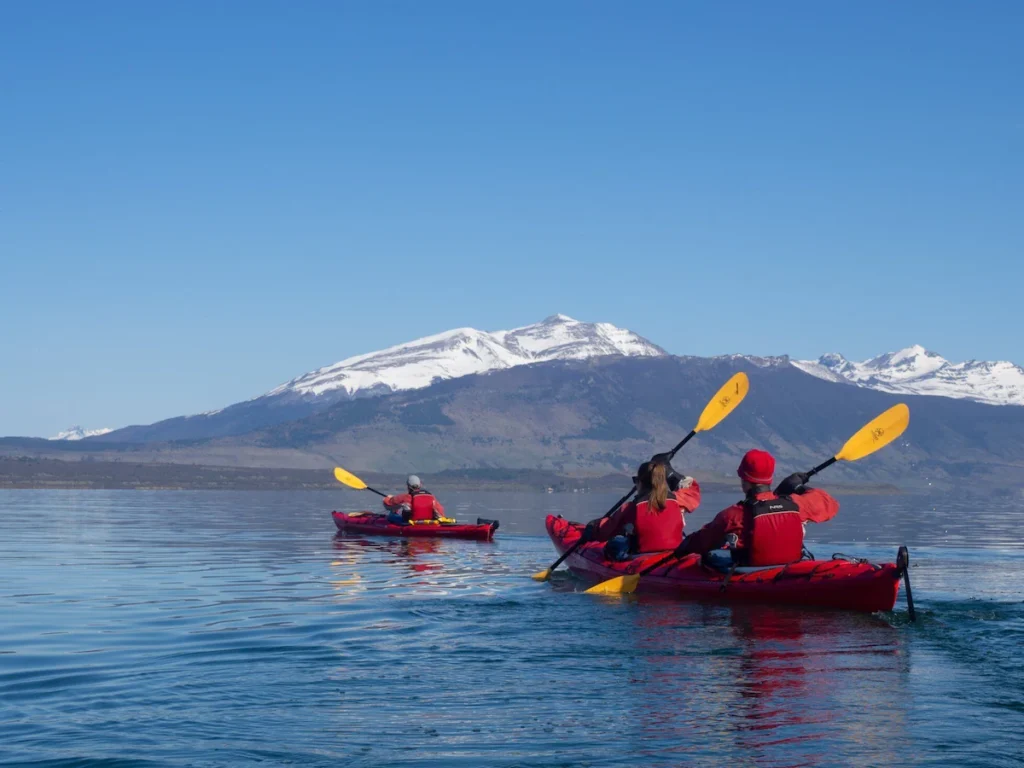
Apart from the improvements in accommodation, new modes of transportation have also been developed within the area. New shuttle services and road access have been constructed to help travel more easily around attractions and remote areas. These are necessary because they provide the visitor with a way of moving around the varied landscapes of Patagonia-from the mountains to the lakes-without displacing carbon. Also, local government is encouraging greener transportation, like electric vehicles, to enable eco-friendly transportation of people around the area.
In Patagonia, paths where trekking is done are also being improved: trail upgrades and implementation of safety features among other plans. Authorities are investing in infrastructure that not only improves access to popular treks such as Torres del Paine Circuit but also lesser-known paths that host unique experiences. The incorporation of signs, rest areas, and waste management facilities addresses the increasing foot traffic while preserving the natural environment. These developments contribute to a more organized experience for trekkers, allowing them to explore freely while respecting the delicate ecosystems.
In all, recent upgrades to Patagonia’s travel infrastructure demonstrate a commitment to responsible tourism. As these projects continue to roll out, they will improve visitor access while protecting the pristine beauty of this remarkable region for future generations.
New Eco-Lodges in the Spotlight

Recently, Patagonia has gained momentum in ecotourism, typified by the proliferation of eco-lodges that accommodate environmentally sensitive tourists. The eco-lodges have ensured a commitment to environmentally friendly architecture with available hotel operation modes and measures regarding landscape conservation carefully developed and executed. Most of the newer eco-lodges are constructed from local building materials, which in most instances have tended to follow sustainable building techniques with as minimal environmental impact as possible.
One such model is the Eco Lodge Patagonia, which was built to fit right in with its surroundings. It involves low-impact designs, like green roofs and naturally sourced materials that not only reduce carbon footprint but also add beauty to a vista. Often, some lodges have renewable energy solutions, including solar panels and wind turbines, thus providing energy without hurting the fragile ecosystems where they may be.
Besides all that, many of the new eco-lodges in Patagonia adhere to responsible tourism standards. Offering local culture by hiring staff from surrounding communities and buying food locally also makes for a far more interesting travel experience and supports the local economy. With guided nature walks and workshops that put the focus on Patagonian wildlife and sustainability, these same lodges now offer activities that educate travelers about the rich biodiversity of the region and the importance of conservation efforts.
Besides being sustainable, these eco-lodges will be planned as an oasis for guests, normally located in the most far-off locations, with views and experiences not found elsewhere. Centered around reconnecting guests with nature, travelers will be able to experience the breathtaking beauty of Patagonia while enjoying contemporary comforts worked into the design of the lodge. This new wave of eco-lodges not only enhances the experience of the traveler but is also a model for sustainable tourism in one of the worlds’ most pristine regions.
Updated Hiking Routes and Adventure Options
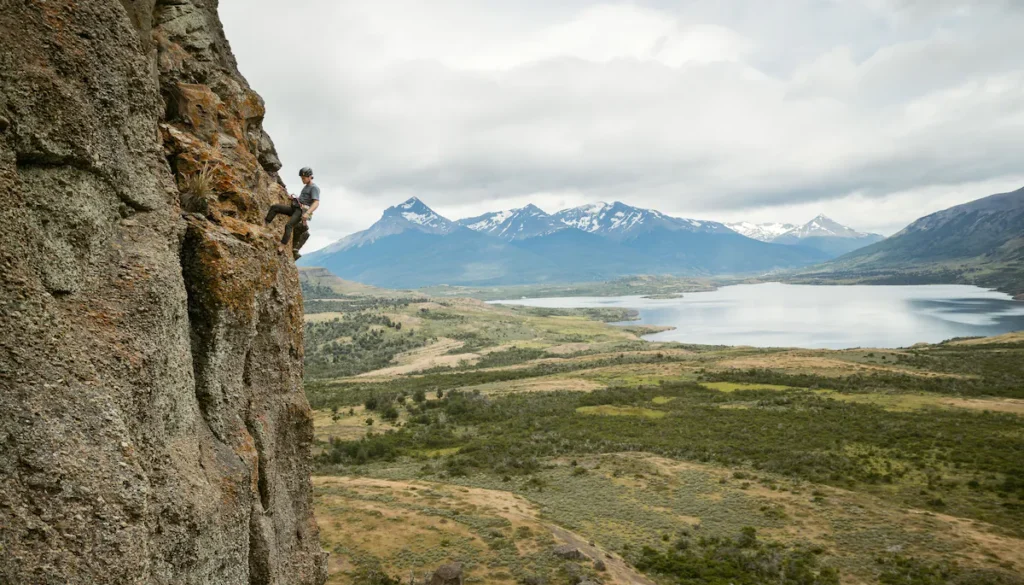
Patagonia, with its magnificent landscapes and minimum biodiversity, has been constantly changing into one of the greatest trekking spots for trekkers and outdoor enthusiasts. It has recently developed a plethora of newer trek routes suitable for amateur trekkers to experienced ones, so that each type of hiker could admire the natural beauty of the region. The improved signs and infrastructure are prominent in the new trails, making it very easy to handle by the trekkers.
Improvements also include the revamped Torres del Paine Circuit, featuring enhanced pathways and rest areas. These have tended to make it somewhat safer and easier to access, without ruining any of the beauty for those making the hike. Another challenging offering is the newly routed trail up Mount Fitz Roy, which involves technical climbs with stunning views down to granite spires and glacial lakes.
Large additions to trail updates include the introduction of experienced local guides, which raise the level of safety and confidence in trekkers attempting these routes. Guides offer great advice on equipment and safety measures and have extensive experience with the geography and weather patterns of the region. Recently, some tour operators providing organized tours that include accommodations and transportation have been a plus for those that are unfamiliar with the area.
Another trend that has molded trekking in Patagonia is the growing emphasis on sustainable practices. Most firms have engaged in eco-friendly methods; thus, they support low-impact trekking to preserve the natural environment for the next generation. This commitment to sustainability means one can explore these pristine landscapes while supporting efforts to conserve this remarkable region.
With the continuous opening of more hiking trails and adventure activities, Patagonia still remains an exciting destination for all those travel enthusiasts who also enjoy tours to the wilderness for nature exploration.
Sustainable Tourism: The New Feathers of Patagonia
In recent years, sustainable tourism has been one of the largest growing concepts in most parts of the world, and Patagonia is not an exception. While exploring this breathtaking region, most travelers today are motivated by ecologically viable options that will enable them to lessen their impact on the environment. That is why people attracted by nature and willing to treat it responsibly come to this area because of the unique and diversified landscapes, ecosystems, and rich cultural heritage of Patagonia.
One of the main drivers of the increase in sustainable tourism in Patagonia comes from growing awareness of global warming and the destruction of the environment. Now, many tourists are interested in having experiences that contribute to positive impacts on the environment and people. This has brought demand for eco-friendly accommodations, guided tours of environmental conservation, and activities that contribute to the preservation of natural resources. Travelers are likely to favor those providers who stick to sustainable practices, filling the local economy, while ensuring that their adventures leave a minimal footprint.
Due to this trend, many locals have started changing the way they sell services and practices to tourists in order to accommodate them. Most accommodations now have included such sustainable design features as energy-efficient systems, programs of waste reduction, and organic food product sourcing. Also, tour operators are increasingly offering experiences that highlight their conservation efforts, allowing tourists to be actively involved in the very thing that preserves such beautiful landscapes of Patagonia. These adaptations serve not only to enhance the visitor experience but further support local conservation efforts-a symbiotic relationship where the tourist travels to appreciate this pristine environment.
The increasing focus on sustainable tourism in Patagonia can be considered a larger global movement, where the world is becoming increasingly conscious of the choices being made as travelers. This will be a continuing trend for the future as well because it acts as a driving force that continues to shape the tourism landscape of this region and further promotes environmental responsibility and cultural preservation into several generations.
Luxury Adventure Travel: A New Trend
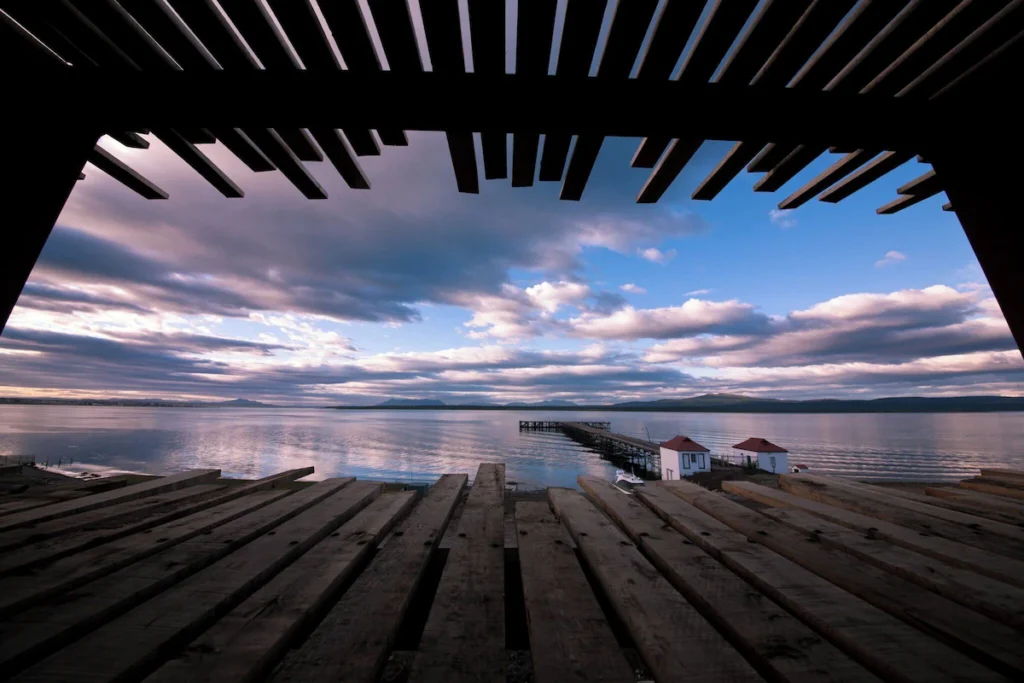
For a long time, Patagonia has held a mystique for travelers, but there is a new revolution in this beautiful region: the rise of high-end adventure travel. It’s a growing trend that pairs adrenaline-pumping exploration with five-star comforts. In recent years, increasingly, travelers have favored unique and immersive experiences whereby they can connect with Patagonia’s dramatic landscapes without sacrificing one comfort.
Luxury adventure travel by Patagonia is becoming a haven of customized experiences in exclusivity and personalization. It has become a norm to have high-class lodges with guided tours in isolation, allowing guests to see the beauty of nature without having to sacrifice something off the luxury packages. These packages most especially include haute cuisine, private guides, and customized itineraries fully utilizing the dramatic scenery of Patagonia, from the imposing peaks of the Andes down to the serene lakes of the Chilean fjords.
The newest wave of luxury tours has private kayak excursions, glacier hikes, and wildlife watching-lowered by expert guides who can also impart in-depth knowledge regarding the local ecology and culture. There is also a wellness retreat that combines relaxation and rejuvenation to help travelers clear their minds and connect with nature. These luxury experiences will bring one closer to nature, also satiating the thrill of those seeking adventure-in style.
As more and more people travel for high-end adventure in Patagonia, operators have been adjusting to the evolving preferences of today’s wealthy traveler. Where comfort meets adventure-a novel way to tour one of the most inhospitable yet breathtakingly beautiful parts of the world-is opening its doors to a whole new breed of explorers through the varied landscapes of Patagonia.
Community Engagement and Local Partnerships

Community involvement is a cardinal point in tourism development, especially in areas like Patagonia, where the wild landscapes are fully endowed with diverse local cultures. Involving residents is important to ensure that tourism initiatives not only do not hurt the peculiar heritage of these areas but also fully respect them. This will help enhance the relationship between tourism players and locals, so that tourists can be provided with authentic experiences which represent the traditions, customs, and genuine way of life of Patagonian communities.
Recent efforts within Patagonia have demonstrated what can be achieved in the name of touristic providers and residents collaborating. For example, a number of tour operators have started to involve local guides with their groups. It is these guides who will not only know many of the most stunning sights but are also deeply familiar with the cultural stories and historical backgrounds of their homeland. The partnership enhances the visitor experience but also provides an economic benefit to the locals by helping ensure that a certain percentage of revenue remains within the community.
In addition, local businesses are increasingly becoming a focal point in tourism packages. With the inclusion of indigenous crafts, food traditions, and family-run accommodations in travel itineraries, tourism operators are helpfully guaranteeing that the hosted economy benefits. Such collaborations further foster the continuance of traditional practices and customs that might otherwise run the risk of dilution due to mass tourism.
Many projects of community-based tourism, especially regarding sustainable activities that do not harm the environment, intend to raise the cultural awareness of guests. Educational tours, workshops, and volunteer opportunities make travelers take an active part in the life of the community; thus, help to encourage feelings of responsibility and respect for natural and cultural heritage in Patagonia.
These budding partnerships reveal a community-based approach to tourism, which is sustainable and allows for authentic engagement. Tourism in Patagonia must increasingly take center stage to ensure that local voices are heard so that visitor economy development ensures benefits accruing to both visitors and residents.
Environmental Conservation Efforts
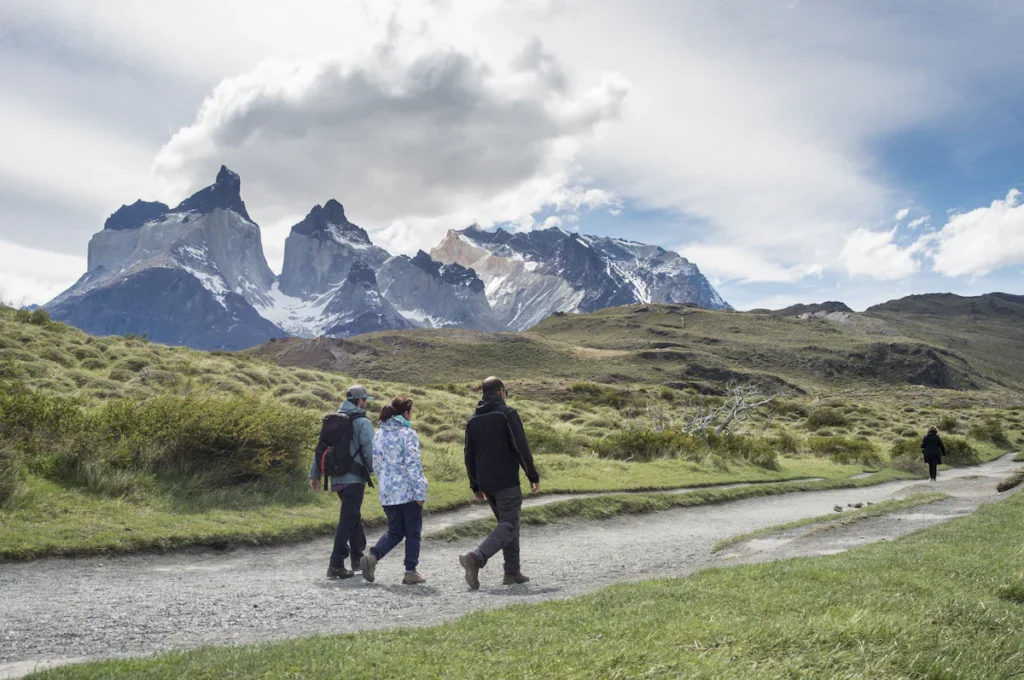
Tourism and conservation at the crossroads may probably be one of the recent phenomena of importance in Patagonia. While traveling to this wonderfully beautiful region, tourism has assumed a major responsibility to enhance the element of sustainability in preserving the distinct ecosystems that epitomize Patagonia. On the contrary, different conservation projects continue in this region, supported actively by the local tourism initiatives, showing a mutual interaction for the protection of the environment.
These include the plan for national parks restoration and conservation, like Torres del Paine and Los Glaciares. These parks are not only a home for key species but also one of the major places for eco-tourism. With entrance fees and donations in those parks, money has been collected to take care of the wild animals and to maintain the trails in that area so that the structure and nature learn to coexist without harming each other. Besides that, some education programs have been initiated with the aim of raising tourist awareness about the biodiversity situation within the area, as well as informing them of proper actions to ensure sustainability.
Eco-tourism has the undeniable effect of encouraging greater natural resource conservation. It instills in the traveler a greater appreciation for the environment and promotes responsible behaviors while traveling. The modern-day traveler is seeking more nature-contacting experiences, coupled with the desire to give back towards nature and its conservation. This has been increased by the emergence of tour operators that support low-impact travel modes such as treks and wildlife tours in an advocacy of respect to the landscape.
On the other hand, a bevy of climate change-related projects have also begun to spring up across Patagonia. Based on the combination of local communities, government agencies, and non-profit organizations, the work includes things like reforestation and renewable energy projects. These benefit the environment and help give economic opportunities to people living in the local communities, showing that tourism can also be used for the betterment of humanity. With such holistic approaches, the future indeed looks promising for Patagonia, and tourism serves as a facilitator toward protection for the environment.
Conclusions: Patagonia Travel Future
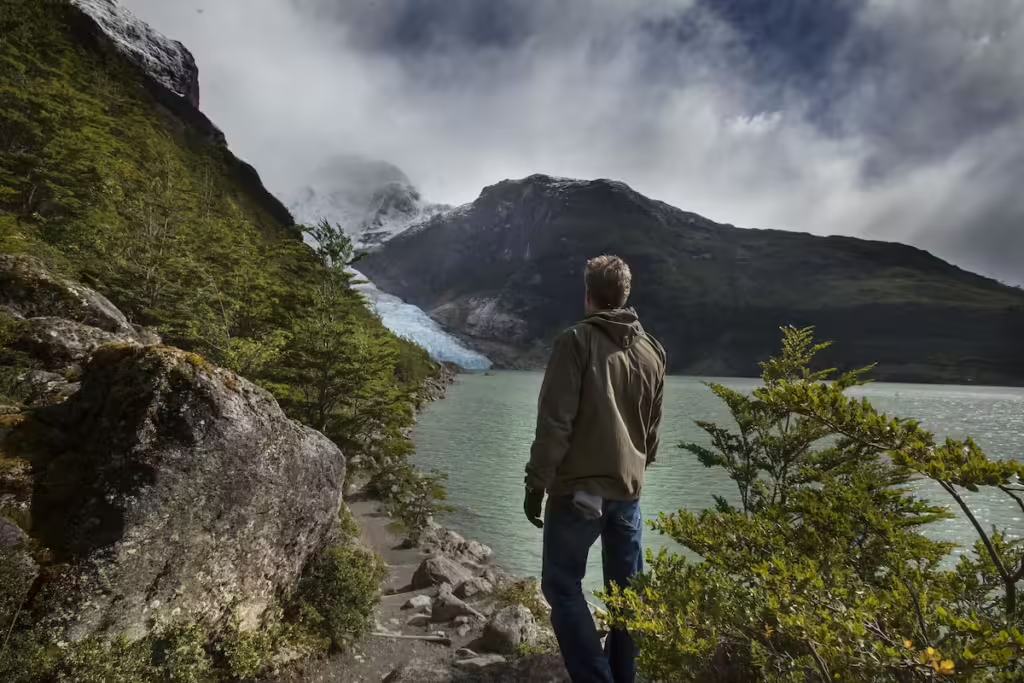
As travelers become more interested in special experiences, Patagonia is one of the few places that effectively melds action, opulence, and sustainability. Community impact and environmental stewardship are honed in recent developments within this breathtaking region, improving visitor experiences. A surge in ecologically sensitive accommodations, responsible tour operators, and community-based projects shows a collective commitment by all stakeholders to the minimal ecological footprint from travelers and ensures that the landscapes remain pristine for future generations.
Emerging trends denote that Patagonia is growing from an adventure hot spot into a multi-interest destination. The luxury traveler finds his choice in boutique lodges offering all possible high-end services, following the principles of sustainability. Meanwhile, the adventure seekers continue to get hooked on the vast array of activities starting from trekking the iconic Torres del Paine National Park to navigating the stunning fjords of the Chilean coast.
Besides, emphasizing local culture and heritage allows guests to better understand diverse history and regional traditions. Such interplay with indigenous people and local artisans creates a sense of connection not easily felt in more touristy destinations. By embracing such developments and trends, Patagonia positions itself as a responsible travel leader where it’s not just natural sceneries to be enjoyed but also an opportunity to give back to communities and environments it touches.
It is in the end, for Patagonia to balance tourism’s future between exploration and conservation. In implementing a culture of responsible tourism that can promote an enhanced travel experience while preserving its natural and cultural heritage, it is only then that Patagonia can remain one of the world’s most desirable destinations for intrepid and responsible travelers.

